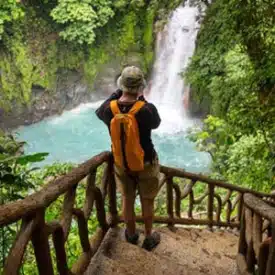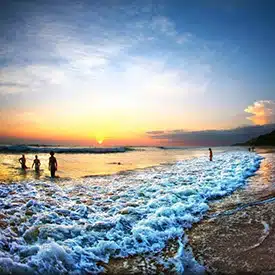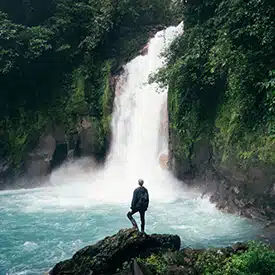DRY SEASON – December, January, February, March, April:
For most regions, the Costa Rican dry season lasts from December through April and features significantly less rain and much more comfortable temperatures. This is also peak tourist season, so if you’re not into crowds you may want to opt for travel during the shoulder season.
Pack comfortable and lightweight layers so that you can add and remove them as needed. Fabrics that dry quickly are still important – you may be engaging in water activities or ones that make you sweat. Don’t forget your hat, reef-safe sunscreen, and sunglasses – the sun is extremely strong when you’re near the equator, so come prepared!
Temperatures average between 65°F to 75°F (18°C to 24°C) during this time of year, with November through January being the coolest months.
WET SEASON – May, June, July, August, September, October, November:
These months bring rain to almost the entire country – and lots of it! Although the Caribbean region of the country has very enjoyable weather during September and October if you’re looking to travel during those months.
The best parts about travelling during the rainy or “green” season are the gorgeous vegetation (hence the term “green season”), the incredible waterfalls, and the smaller tourist crowds that make sightseeing easier. The rain, however, can take a toll on unprepared travellers. Bring a good rain jacket and dependable hiking shoes that can withstand water. It’s also wise to bring a second pair of sandals or water shoes to avoid having to re-wear soggy shoes. Quick-dry fabrics are crucial.
Temperatures during the wet season average between 75°F to 85°F (about 24°C to 29°C), though it will feel humid and a little hotter than it really is.
A note about regional differences: Costa Rica is known for its topographical and climate variations. Exploring the country will take you to some high and cool areas, and to some low and very warm areas, plus everything in between. It’s a good idea to do some research about your specific destination(s) in the country before you go, and to follow the packing guide above to be sure you have gear for any weather.









































